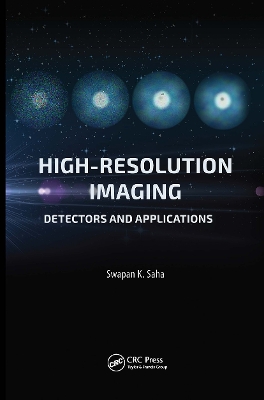Interferometric observations need snapshots of very high time resolution of the order of (i) frame integration of about 100 Hz or (ii) photon-recording rates of several megahertz (MHz). Detectors play a key role in astronomical observations, and since the explanation of the photoelectric effect by Albert Einstein, the technology has evolved rather fast. The present-day technology has made it possible to develop large-format complementary metal oxide-semiconductor (CMOS) and charge-coupled device (CCD) array mosaics, orthogonal transfer CCDs, electron-multiplication CCDs, electron-avalanche photodiode arrays, and quantum-well infrared (IR) photon detectors. The requirements to develop artifact-free photon shot noise-limited images are higher sensitivity and quantum efficiency, reduced noise that includes dark current, read-out and amplifier noise, smaller point-spread functions, and higher spectral bandwidth. This book aims to address such systems, technologies and design, evaluation and calibration, control electronics, scientific applications, and results.
One of the fastest growing applications is signal sensing, especially wavefront sensing for adaptive optics and fringe tracking for interferometry, which is important for long-baseline optical interferometry. The coherence time of the atmosphere is a highly variable parameter. Depending upon the high velocity wind, it varies from 1 ms to 0.1 s. The exposure times are to be selected accordingly, to maximize the signal-to-noise ratio, as well as to freeze the fringe pattern. A large-format photon-counting system, which is an essential tool in the application of optical interferometric imaging, allows accurate photon centroiding and provides the dynamic range needed for measurements of source characteristics. The advent of high-quantum efficiency photon-counting systems vastly increases the sensitivity of high-resolution imaging techniques. Such systems raise the hope of making diffraction-limited images of objects as faint as ~15-16 m_v (visual magnitude).
This book deals with the fundamentals of the important aspects of high-resolution imaging, such as electromagnetic radiations, particularly, optical wavelengths and their distortions due to optical elements and Earth's atmosphere while passing through a detector; semiconductor physics; lasers; fiber optics; photon-detection process; photodetectors; charge-transfer devices; photon-counting devices in visible wavelength; radiation detectors in infrared wavelengths; and detecting systems for high energies.
- ISBN10 9814613274
- ISBN13 9789814613279
- Publish Date 28 January 2015 (first published 1 January 2015)
- Publish Status Active
- Publish Country SG
- Imprint Pan Stanford Publishing Pte Ltd
- Format Hardcover
- Pages 600
- Language English
